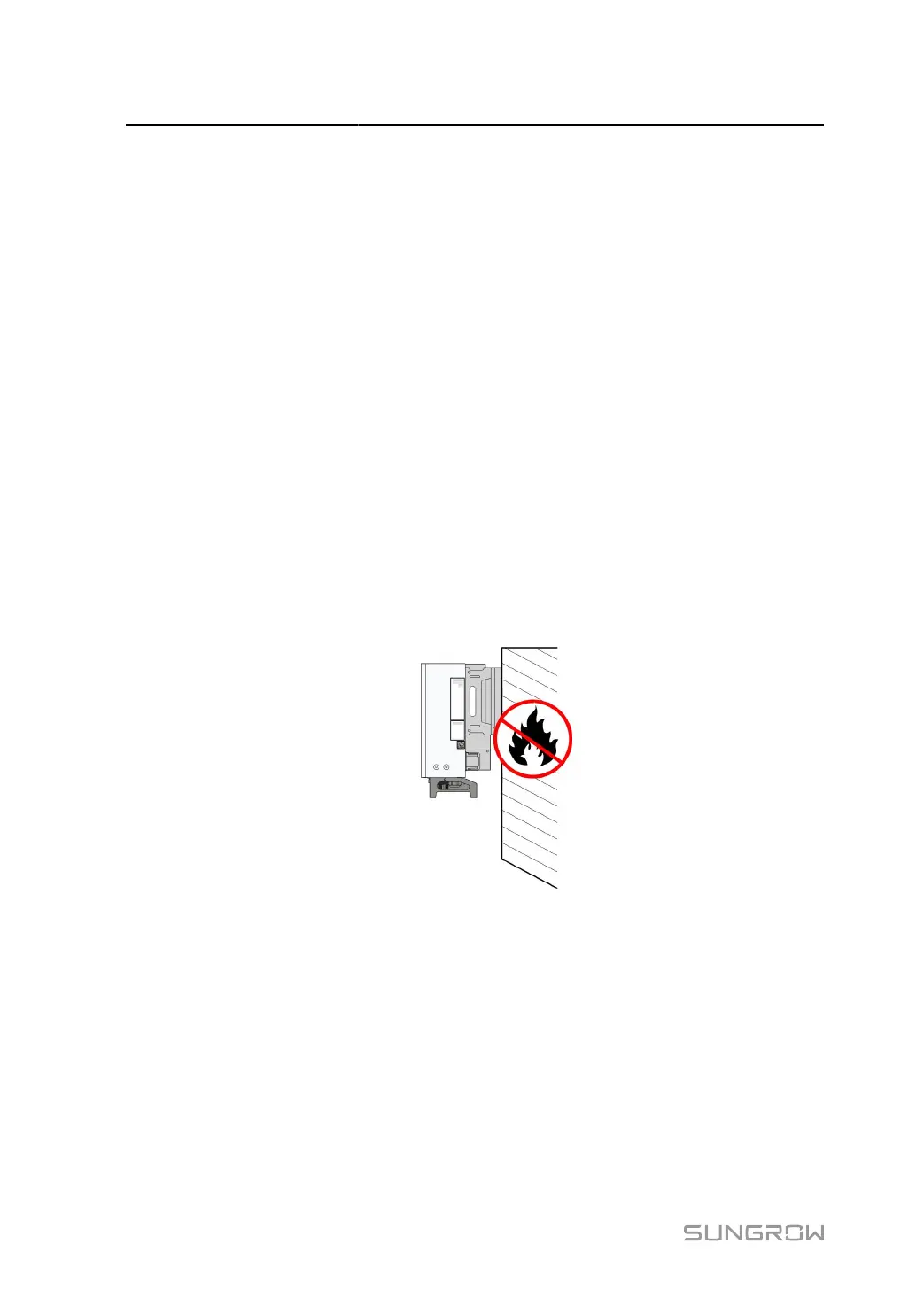4 Mechanical Mounting User Manual
fog varies largely with nearby seawater characteristics, sea wind, precipitation, relative hu
midity, terrain, and forest coverage.
• Install the inverter in a sheltered area to avoid direct sunlight and bad weather (e.g. snow,
rain, lightning, etc.). The inverter will derate in high temperature environments for protec
tion. If the inverter is installed in direct sunlight, it may cause power reduction as the tem
perature rises.
• The inverter should be well ventilated. Ensure air circulation.
• It is strictly prohibited to install the inverter in environments with vibration and strong elec
tromagnetic field. Strong-magnetic-field environments refer to places where magnetic field
strength measures over 30A/m.
• The inverter generates noise during operation and is not recommended to be installed in
living areas.
4.2.2 Carrier Requirements
The mounting structure where the inverter is installed must comply with local/national stan
dards and guidelines. Ensure that the installation surface is solid enough to bear four times
the weight of the inverter and is suitable for the dimensions of the inverter (e.g. cement walls,
plasterboard walls, etc.).
The structure should meet the following requirements:
4.2.3 Angle Requirements
Install the inverter vertically or at the maximum allowable rear tilt angle. Do not install the
inverter horizontally, forward, excessively backward, sideways, or upside down.
Inverters in floating plants cannot be installed at a back tilt.
20
